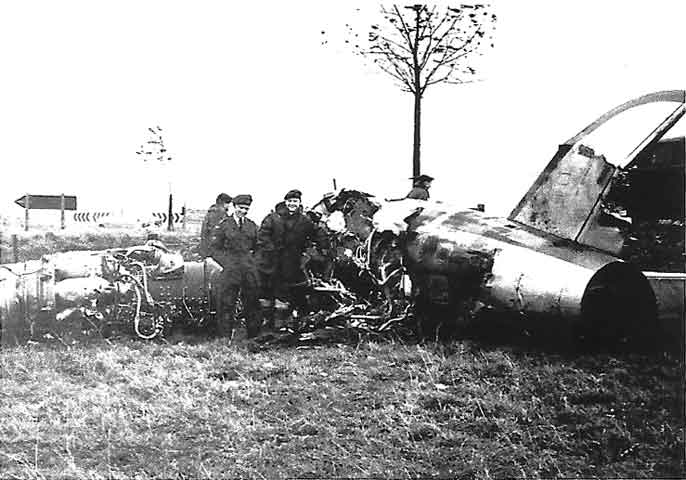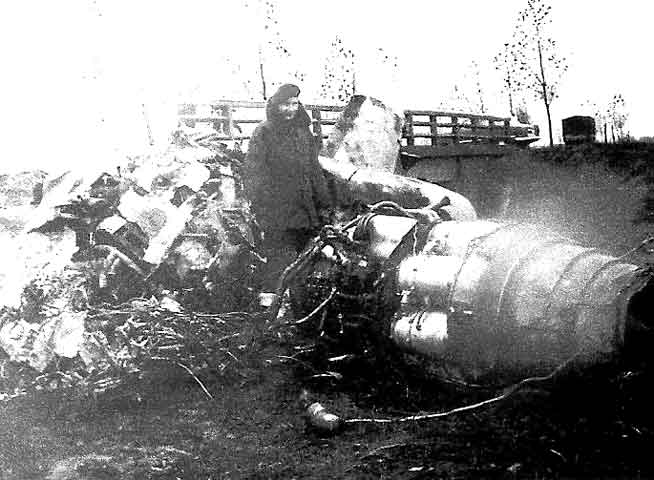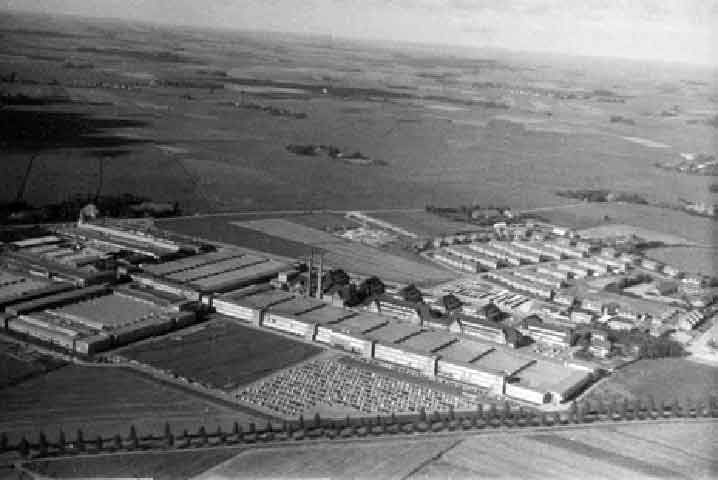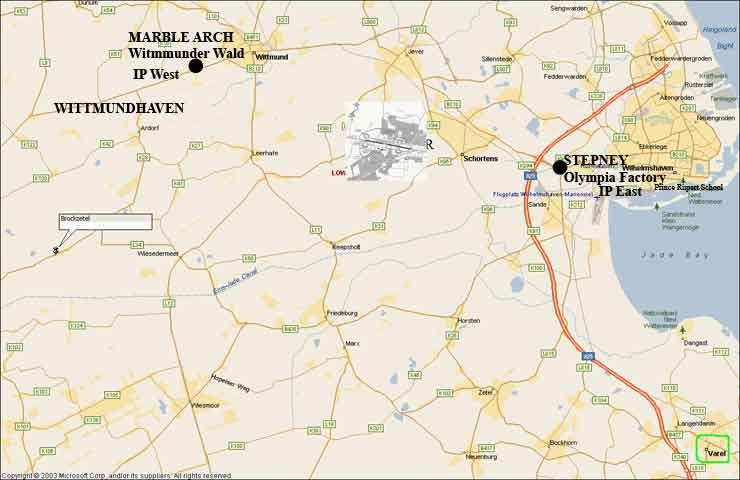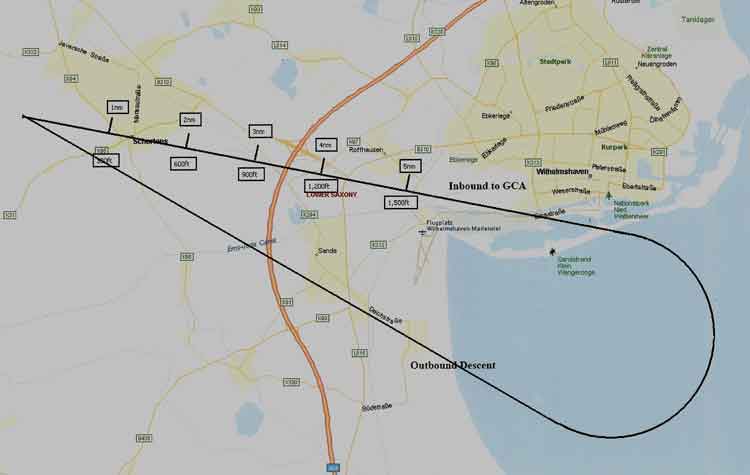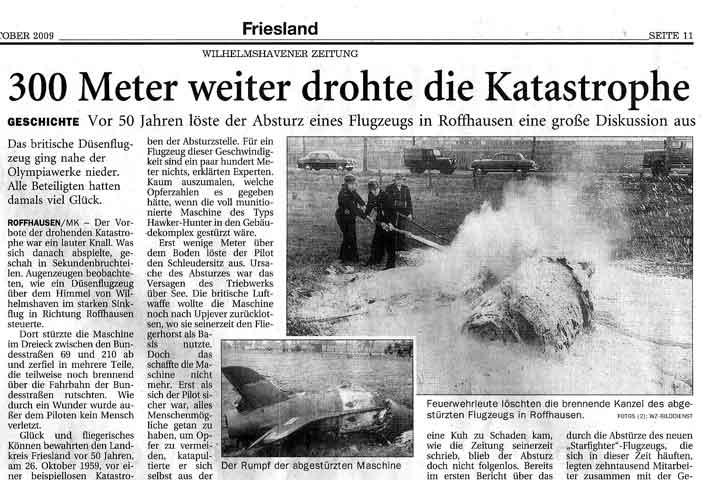
|
||
|
Crash of Swift WK 304 - Monday 26th October 1959 This is a recent local German newspaper report published in October 2009, on the crash of Swift WK 304 on Monday 26th October 1959. Maurice was a bit puzzeled at first because the report claims that it was a Hunter, but looking at the picture it can only be a Swift. The date also tie-up with the details in the JSL web site aircraft lists and so it can then only be WK 304. The pilot, Al Martin, ejected and seriously injured his back as this was his second ejection. The aircraft had an engine failure over the North Sea. Maurice has not translated everything, just the interesting parts. Captions to pics, large: Firemen extinguishing the burning 'cockpit' of the crashed aircraft in Roffhausen. (Looks like the engine though) small: The rear fuselage of the crashed aircraft. 300 m further would have caused a disaster History: The aircraft crash in Roffhausen 50 years ago started off big discussions. A British jet aircraft crash - landed near the Olympia Werks. All persons involved then were very lucky. Roffhausen - A pre-warning of the threatening disaster was a loud explosion. What then happened took only a split second. Witnesses observed a jet aircraft in the sky over Wilhelmshaven that was decending in a glide in the direction of Roffhausen. The aircraft crashed near the junction of the B69 and B210 and disintergrated. Several parts of the still burning wreckage slid across the main road. Due to a miracle no one, other that the pilot was injured. 50 years ago, on the 26th. October 1959, only luck and flying skill saved the Landkreis Friesland from a unprecedented disaster. Investigations later revealed that it was only because the RAF pilot remained with his aircraft until the very last minute that no further damage was caused. As on every Monday morning, just before lunchtime, thousands of employees were at work in the Olympia Werks which was only 300m away from the site of the crash. Experts said later that in relation to the speed of the aircraft a few hundred metres is practicaly nothing. It is difficult to imagine the number of casualties there would have been if the fully armed Swift had crashed into the factory. The pilot ejected just prior to the aircraft hitting the ground. The cause of the crash was an engine failure over the sea. The RAF had attempted to guide the aircraft back to its home base at Jever but this could not be reached. Once the pilot was sure that he had done everything humanly possible to avoid any casualties he ejected out of the aircraft. Due to the low altitude of ejection the parachute did not open fully and the pilot suffered facial injury and bruies. The Wilhelmshaven Fire Brigade quickly reached the site of the crash and extinguished the blazing cockpit which had slid 50m further on over the main road. The fuselage section had brocken off several trees. RAF personnel cleared away the ammunition that was scattered over the area of the crash.
Following this accident and the 'Starfighter' crashes in the years thereafter, emplyees at Olympia were very concerned that this sort of thing would happen again which resulted in big dicussions in the local press with regard to 'Starfighter' operations from GAF Jever.
|
||
